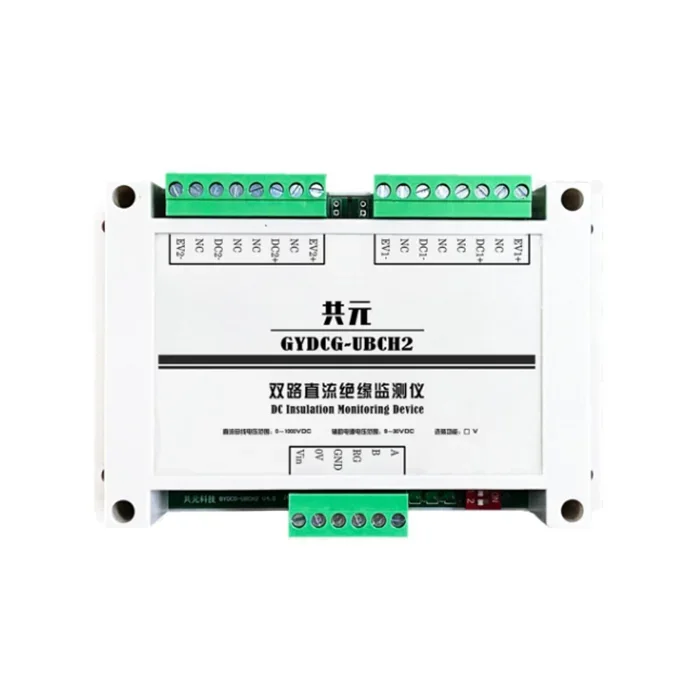Insulation monitoring is a critical aspect of electrical systems, ensuring the safety and efficiency of various installations. With the increasing complexity and demand for reliable power supply, it has become essential to monitor insulation levels to prevent electrical faults, reduce downtime, and enhance overall system performance. In this article, we will explore the concept of insulation monitoring, its importance, and the various technologies and methods used in this field.
Understanding Insulation Monitoring
Insulation monitoring is the process of continuously monitoring the insulation resistance of electrical systems, equipment, and installations. It involves measuring the electrical resistance between live conductors and earth, providing valuable information about the condition of the insulation. By monitoring insulation levels, potential faults, such as insulation breakdown or leakage, can be detected early, preventing accidents, equipment damage, and electrical failures.
The Importance of Insulation Monitoring
Ensuring Electrical Safety:
Insulation monitoring plays a crucial role in ensuring electrical safety. By continuously monitoring insulation resistance, potential risks, such as electric shocks and fires caused by insulation breakdown, can be identified before they escalate. This proactive approach helps protect individuals, equipment, and property from harm, reducing the likelihood of accidents and injuries.
Preventing Equipment Damage and Downtime:
Insulation breakdown can lead to equipment damage and unexpected downtime. By monitoring insulation levels, faults can be detected early, allowing for timely maintenance or replacement of faulty components. This preventive approach helps minimize equipment damage, prolongs the lifespan of electrical systems, and reduces costly downtime in industrial, commercial, and residential settings.
Enhancing System Performance and Efficiency:
Insulation monitoring also contributes to the overall performance and efficiency of electrical systems. By identifying insulation degradation or leakage, corrective actions can be taken to optimize system performance. This includes reducing energy losses, improving power quality, and enhancing the reliability of electrical installations.

Insulation Monitoring Technologies and Methods
Insulation Resistance Measurement:
Insulation resistance measurement is the most common method used in insulation monitoring. It involves applying a test voltage between live conductors and earth and measuring the resulting current flow. The measured resistance value indicates the condition of the insulation. If the resistance falls below a predefined threshold, an alarm is triggered, indicating a potential insulation fault.
Insulation Monitoring Devices:
Insulation monitoring devices are specialized instruments designed to continuously monitor insulation resistance. These devices are typically installed in electrical panels, switchboards, or distribution boards. They provide real-time data on insulation levels, allowing for immediate action in case of insulation degradation or leakage. Some advanced insulation monitoring devices also offer remote monitoring capabilities, enabling centralized monitoring of multiple installations.
Insulation Monitoring Systems:
Insulation monitoring systems are comprehensive solutions that integrate insulation monitoring devices, data acquisition units, and software platforms. These systems provide a centralized approach to insulation monitoring, enabling efficient management of multiple installations. They offer features such as data logging, trend analysis, and alarm notifications, facilitating proactive maintenance and troubleshooting.
Applications of Insulation Monitoring
Industrial and Manufacturing Facilities:
Insulation monitoring is widely used in industrial and manufacturing facilities to ensure the safety and reliability of critical electrical systems. It helps prevent equipment damage, production downtime, and potential hazards to personnel. Insulation monitoring systems are particularly beneficial in industries where continuous operation is essential, such as power generation, oil and gas, and chemical processing.
Commercial Buildings and Facilities:
Insulation monitoring is also essential in commercial buildings and facilities, including offices, shopping malls, hospitals, and hotels. By monitoring insulation levels, potential electrical faults can be detected early, minimizing the risk of fires, electrical failures, and disruptions to daily operations. Insulation monitoring systems provide facility managers with valuable insights into the condition of electrical systems, enabling proactive maintenance and ensuring a safe environment for occupants.
Renewable Energy Installations:
With the increasing adoption of renewable energy sources, insulation monitoring has become crucial in solar photovoltaic (PV) installations and wind farms. These installations often involve high-voltage DC systems, making insulation monitoring essential for early detection of insulation degradation or faults. By monitoring insulation levels, potential risks, such as arc faults or ground faults, can be identified, ensuring the safe and efficient operation of renewable energy installations.

Conclusion
Insulation monitoring is a vital aspect of electrical systems, ensuring safety, efficiency, and reliability. By continuously monitoring insulation levels, potential faults can be detected early, preventing accidents, equipment damage, and downtime. With the advancements in insulation monitoring technologies and the availability of comprehensive monitoring systems, it has become easier to implement effective insulation monitoring strategies in various applications. By prioritizing insulation monitoring, individuals, businesses, and industries can enhance electrical safety, optimize system performance, and minimize risks associated with insulation breakdown or leakage.
